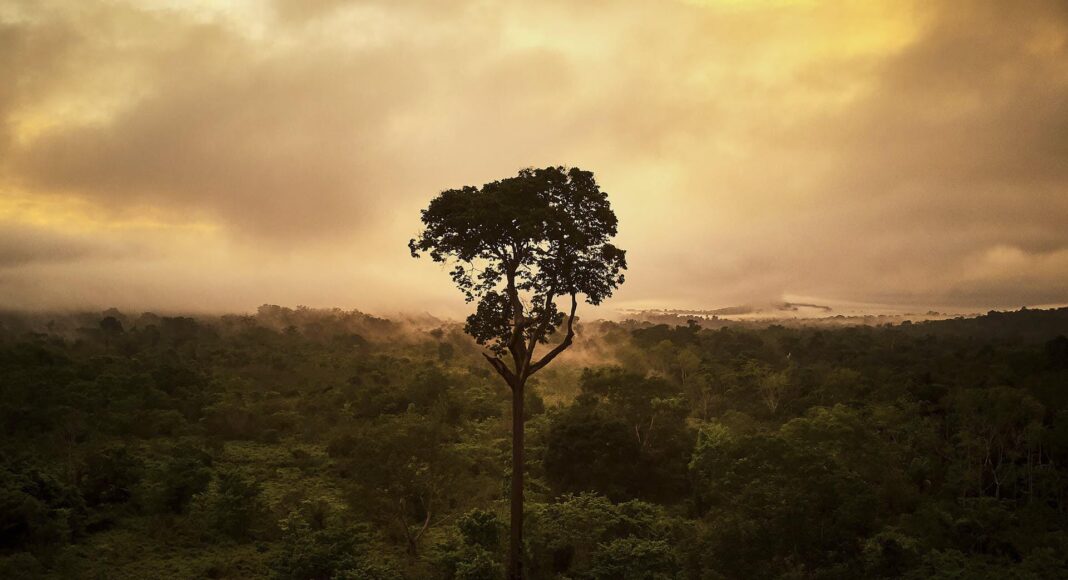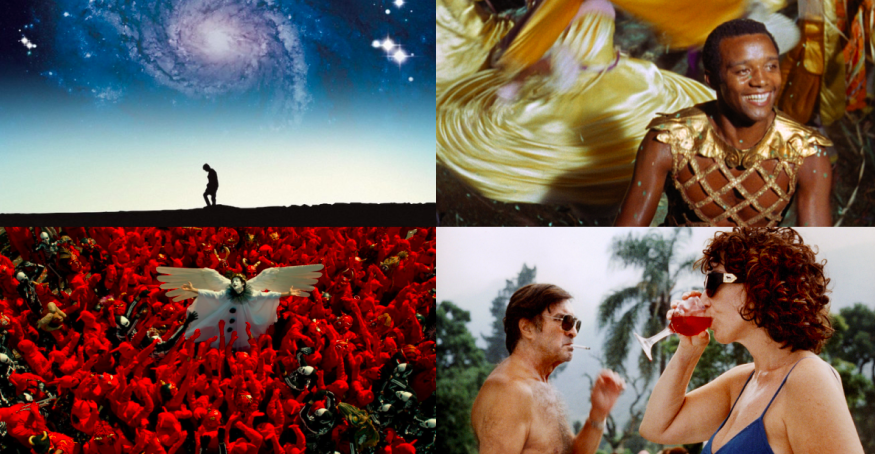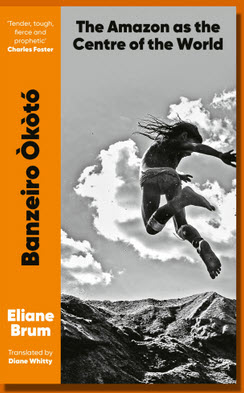
Banzeiro Òkòto – the Amazon as the Centre of the World is one of the most extraordinary books I have ever read. In it Eliane Brum, one of Brazil’s leading journalists, tells the story of how she decided to leave her comfortable life in São Paulo and immerse herself in the Amazon so she could radically rethink all she had been brought up to believe and begin to understand the forest and its people, who have, she says, the key to surviving the approaching climate apocalypse.
She says:
The battle for the Amazon, the reforestation of selves and the Amazonization of the world is a movement to overthrow the hegemony of Western, patriarchal, white, masculine and binary thought, which has ruled the planet in recent millennia and exterminated, silenced or driven to the margins all other forms of perceiving oneself in, for, and with the world. The battle for the Amazon is the battle to reforest worlds – outer ones and inner ones.
The book magically mingles fascinating personal stories, her own and others’, with a profound discussion of the issues. It is a page-turner, hard to put down.
Part of the fascination comes from her whole-hearted commitment.
For me, the destruction of the Amazon has become a personal matter, and I’ve come to understand the corrosion of the forest as the corrosion of my own body, and not just in an intellectual sense.
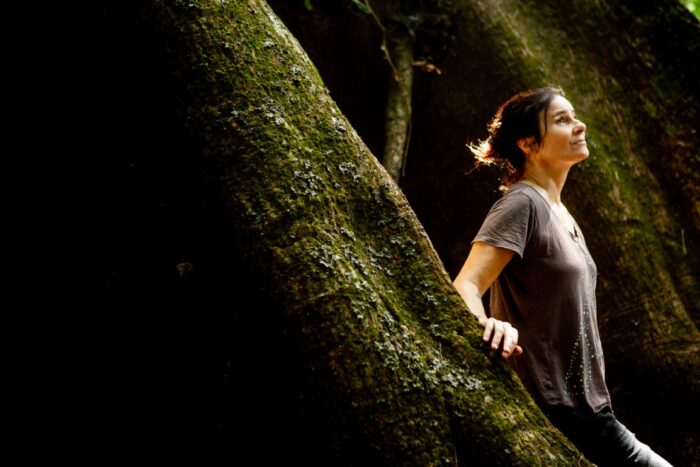
Courageously, Eliane decided some years ago to move to Altamira, a deeply unpleasant city in Pará state, which grew chaotically in the 2010s with the construction of the huge and controversial Belo Monte dam. The dam attracted 25,000 construction workers and, though many have now moved on, it remains a violent, polluted and fragmented city. By moving there, Eliane radically broke with her previous life, ending a long and rewarding personal relationship.
The move was extremely painful for Eliane: ‘To stay in Altamira I had to kill myself, cry over myself, grieve over my own mourning. I realise now that this grieving isn’t over yet, but it is necessary to go on.’ For her, Altamira is a foretaste of what lies ahead for the world:
Altamira is in ruins. Like Brazil, Altamira is a constant building of ruins, atop the most monumental of ruins: the forest that was once there. Like all symbolic frontiers, Altamira is the world’s vanguard.
The move brought Eliane a much deeper understanding of the Amazon’s traditional inhabitants – the Indigenous people, the beiradeiros (the families who live on the banks of the rivers, many of them the descendants of the hundreds of thousands of men who moved to the Amazon to tap tubber and often married Indigenous women) and the quilombolas (Afro-Brazilians, many of them descendants of runway slaves).
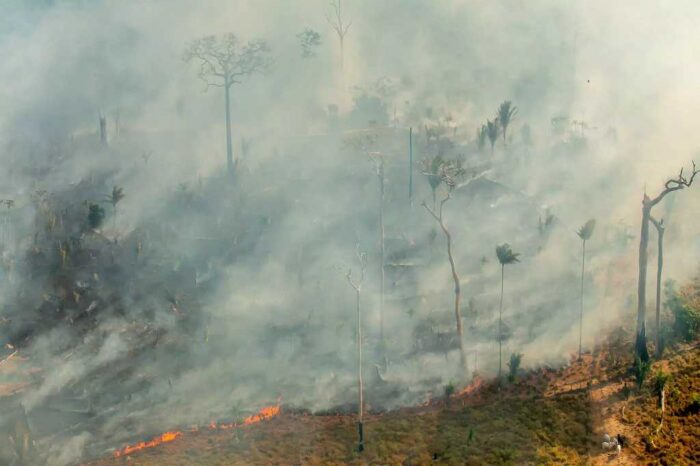
Eliane creates a word that covers them all: ‘forestpeoples’ — people who see themselves as belonging to the forest, not the other way round. They regard humans as just one of the many thousands of species in the forest, each of whom depends on the other.
Through her constant conversations with forestpeoples, Eliane has come to realise the brutality of their expulsion from the forest, a process she calls ‘deforestation’. She says: ‘Someone who is deforested … suffers a process of being wrenched from the ground, the ground of land and water, the ground of culture, the ground of bonds and affections.’
Eliane sees what is happening as a continuation of the colonial process of exterminating forestpeoples, but now in a camouflaged way:
In a globalised world connected by the Internet, if you kill more than 8,000 Indigenous people, as the dictatorship did just a few decades ago, it can hamper trade relations and lead to charges before the International Criminal Court. It has become harder to cover up state crimes. This hasn’t ended the extermination of those who get in the way of big corporations and predatory elites, but it does mean their agents have to find ways that don’t extract blood and don’t produce large numbers of corpses – especially images of corpses.
One of the methods is to forcibly expel the families. Transported to urban housing estates, forestpeoples become part of a generic group of ‘urban poor’ and become vulnerable to their diseases – hypertension, diabetes and obesity. Some cannot adapt. Eliane describes João, once a dynamic community leader, who froze in horror after his move. He told Eliane: ‘I just see darkness. The hole – the hole in my life.’ His voice locked up, he went mute and eventually he suffered a stroke.
I just see darkness. The hole – the hole in my life.
Before the eviction, children learnt from an early age how to live in the forest:
From the time they start walking, the forest children, whether Indigenous, beiradeiros or quilombolas, begin their educational process through knowledge passed down by their parents and grandparents. Still young, they already know how to fish, hunt and navigate, they know which plants they can eat, they’re able to extract water from specific plants, they learn to do what they need to do with their hands, they are people with stories that say who they are and where they come from.
All this is lost with their expulsion from the forest:
Children whose parents and grandparents were expelled from the forest and therefore from themselves, and thus converted into urban poor, are born uprooted from everything … They are lost in the deepest way someone can be lost, because they have been deterritorialised not only from the ground but also from their own bodies. They have no north star, nor any south, east or west. These are children without past, whose present is violence. Violence from the outside, generally in the form of a bullet, but also violence from the inside … This is why the children of Altamira are born old and, like the city, in ruins.
Suicide in Brazil overall rose by 8.3 per cent among 15- to 29-year-olds between 2011 and 2018 and in Altamira the increase was even higher. Eliane fears that self-extermination may increase even more, especially when the effect of climate change becomes more visible. ‘Altamira transformed by Belo Monte can be seen as an experiment in what happens to a community when its ecosystem is destroyed and violence replaces law’, she comments.
Eliane argues that the current war waged on forestpeoples is the culmination of a process, which we call civilisation, by which ‘a dominant minority’ has ‘converted the species into a destructive force capable of altering the planet’s climate and, through this change, altering the very morphology of the only house we all share’.
To turn the situation around’ the forestpeoples must be protected, along with the rest of the forest:
The only effective way to reforest the Amazon is to reforest the forestpeoples who were or are in the process of being converted into the poor, if not for humanitarian reasons, then because they are the front line in the great battle of our time, that of the climate emergency and mass extinction. Unless the forestpeoples are forest, there is no possible way the world’s largest tropical forest can play its role in regulating the climate.
Eliane goes on:
It is time – and perhaps the last time we’ll have – to listen to the people who have been called barbarians, people delegated to the condition of subhumanities throughout the colonizing process. And listen, neither condescendingly nor out of pity, but moved by an ultimate survival instinct. Perhaps, if we are fortunate, those whose lives have often been destroyed by those who label themselves civilised will agree to teach us to live after the end of the world, despite everything we have done to their bodies.
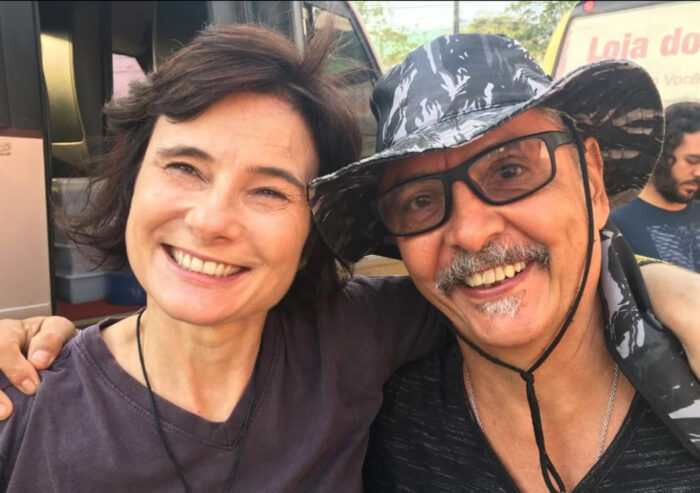
Despite its subject matter, this is not a sad book, though at times it expresses forcefully Eliane’s grief, when, for example, she learns of the unexpected death from Covid of Lilo Clareto, the photographer who worked with her for over 20 years. He is, she says, ‘the other half of my duo’, ‘a torn-out piece of me’. But even here she draws comfort from the Amazonian belief that, after death, you don’t die but transform into another being, in Lilo’s case, a jaguar.
Part of the delight in the book comes from Elaine’s discovery of the ‘joy of being together, even during catastrophe’. Eliane has written about it before when she was with the beiradeiros expelled by Belo Monte. Here she takes it further:
Catastrophe isn’t the end but the middle and the means. I understood this with my body – which makes all the difference – by living alongside people who had lived through various catastrophes, people for whom the world had transformed itself various times and for whom life was rewoven through resistance. But resistance of a dimension unlike what we know through Western experience. Resistance not entailing a heavy burden of the cross, that of martyred resignation, nor resistance through vengeance or the sword.
Resistance has become the raison d’être of many Indigenous lives. They are, says Eliane, ‘people who exist because they resist – and who resist to exist’ and still find great joy in life. We must learn, says Eliane, to ‘live in terror and joy’, as we face ‘the greatest challenge in human history’.
Forestpeoples have long known that life in the forest is dangerous. The title of the book is linked to this idea. ‘Banzeiro is what the people of the Xingu call places where the river goes savage. Where, if you’re lucky, you make it through; where if you’re not, you don’t. It is a place of danger between were you’re coming from and where you want to go.’ Living with the banzeiro and other threats has given forestpeoples resilience and the ability to survive disaster. This is yet another skill we need to learn from them.
Eliane Brum, Banzeiro Òkòto – the Amazon as the Centre of the World, translated by Diane Whitty, The Indigo Press, 2023. £13.99
Main image: Daybreak over the Arinos River, Mato Grosso. ‘But do not be deceived, we are being massacred.’ Photo: Pablo Albarenga/Itaúma.

